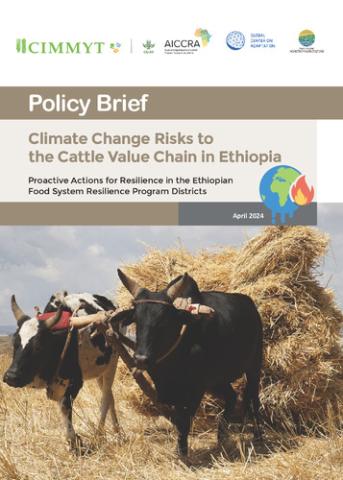Abstract
Cattle value chain plays a significant role in Ethiopia’s economy, backs the livelihoods of millions of households
and is an essential element of the mixed farming, agro-pastoral, and pastoral production systems.
The sector directly contributes ETB 150.7 billion to the country’s GDP, accounting for 17% and 39% of the
overall GDP and the agricultural GDP, respectively. It also generates 16-19% of foreign currency earnings
to the nation. Notwithstanding, cattle production and marketing remain vulnerable to the impacts of climate
change and variability. The following are the projected impacts of climate change on the cattle value chain.
• Meher season rainfall is projected to increase in all AEZs and FSRP districts to an extent of 237 mm
above the baseline.
• Belg season rainfall will decline by up to 47 mm in most cattle-producing areas of Ethiopia while
increasing in a few FSRP districts by up to 22 mm.
• Minimum and maximum temperatures will have an increase by 1 to 1.7 oC and 0.6 to 1.6 oC,
respectively.
• The number of rainy days, heavy rain and very heavy rain days will increase in all cattle-producing
FSRP districts and agroecological zones.
• Consecutive dry days (CDDs) will decline in most FSRP districts, while consecutive wet days (CWDs)
will increase.
• All FSRP districts will have late rainfall onset and cessation dates.
Spatiotemporal alterations in major climatic variables will affect cattle production and marketing, followed
by several unwelcomed socio-economic consequences.

